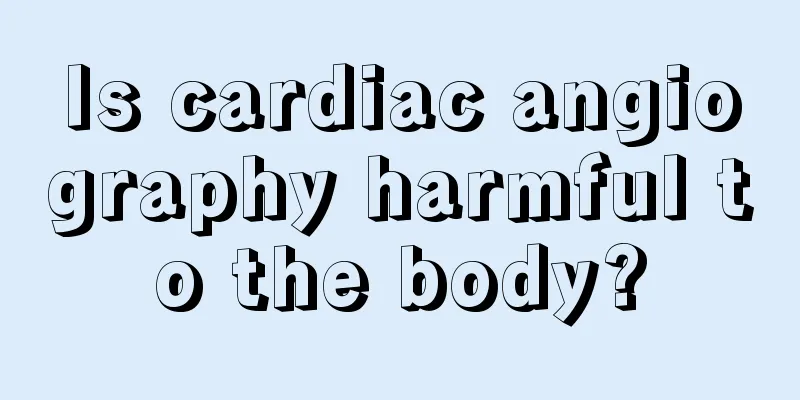Is cardiac angiography harmful to the body?

|
Cardiac angiography is a method used to check for heart disease. This examination mainly refers to cardiovascular angiography, which involves intervention at the wrist or inner thigh of the human body, inserting a thin catheter into the aorta, and then passing contrast agents to check the contrast agent flowing in the blood vessels. This is a very mature examination method, but many people are still afraid that this type of cardiac angiography may cause certain harm to the body. 1. Impact 1. The examination is invasive and requires puncturing the radial artery at the wrist and inserting a catheter, which may cause occlusion of this blood vessel. However, the forearm has two blood vessels supplying blood, so there will be no sequelae except that Chinese medicine cannot take the pulse. 2. There are radiation. The X-ray dose of a standard angiography is about 300 chest X-rays, but much less than CT (several thousand chest X-rays). 3. Contrast agents may have an impact on the kidneys. Contrast agents are used during the examination and need to be excreted through the kidneys. This may increase the burden on the kidneys, but the effects are mostly short-term and reversible. Drinking more water after surgery can speed up excretion. Second, the danger Cardiac angiography is a relatively mature technology and is generally not dangerous when performed in a hospital that performs this examination. However, there are still some problems due to the shortcomings of the technology. 1. Cardiac angiography itself is not dangerous, but the process of inserting a catheter into the heart through the femoral artery is dangerous and may aggravate the occurrence of atrial fibrillation, and the wound may bleed after the operation. 2. The main purpose of using cardiac angiography is to find the exact location of vascular disease and seek ways to allow blood to pass through and unclog the blood vessels. However, since the blood environment has not improved, there is a certain chance of recurrence. 3. In angiography, when large doses of contrast agents are injected, there are many factors that affect their toxic effects. The risk of poisoning is several times greater with rapid injection than with slow injection. Under certain circumstances, tolerance of the myocardium, brain, spinal cord, or kidneys may be reduced. Physicians should choose appropriate contrast agents based on the patient's specific conditions. 4. Currently, the technology of cardiac angiography has matured, but a very small number of patients may have risks such as allergic reactions, thrombus detachment during surgery, postoperative bleeding, and infection. |
<<: What can gastroradiography detect?
>>: Treatment of Alopecia Areata with Ginger
Recommend
What should I eat in the late stage of gastric cancer? Pay attention to these three points
For patients with advanced gastric cancer, their ...
What causes shiny scalp?
Shiny scalp is a very common phenomenon in life. ...
Can pharyngitis cause headaches
People with pharyngitis will often cough and have...
How to remove oil stains from clothes
It is very troublesome to have oil stains on clot...
What are the dangers of nose augmentation?
Many fashionable and beauty-loving women will und...
How can I hold my urine quickly with ultrasound
When people are undergoing a B-ultrasound examina...
Hazards of aluminum powder
Heavy metals are extremely harmful to the human b...
Is plutonium harmful to the human body?
Nowadays, many so-called civilizations will have ...
What tests should be done for glioma
Glioma is a brain tumor disease that has no sympt...
Hysterectomy helps treat cervical cancer
Hysterectomy is the most common gynecological sur...
How to detoxify the liver
From the perspective of traditional Chinese medic...
What are the hazards of musk
my country has started using musk a long time ago...
Are there any symptoms of ovarian tumors that can cause pain in the right lower abdomen?
Ovarian tumors may cause pain in the right lower ...
When do fetal movements decrease?
The so-called fetal movement refers to the moveme...
What are the symptoms of primary liver cancer? Primary liver cancer can be treated with these methods
Primary liver cancer is a type of liver cancer. T...









